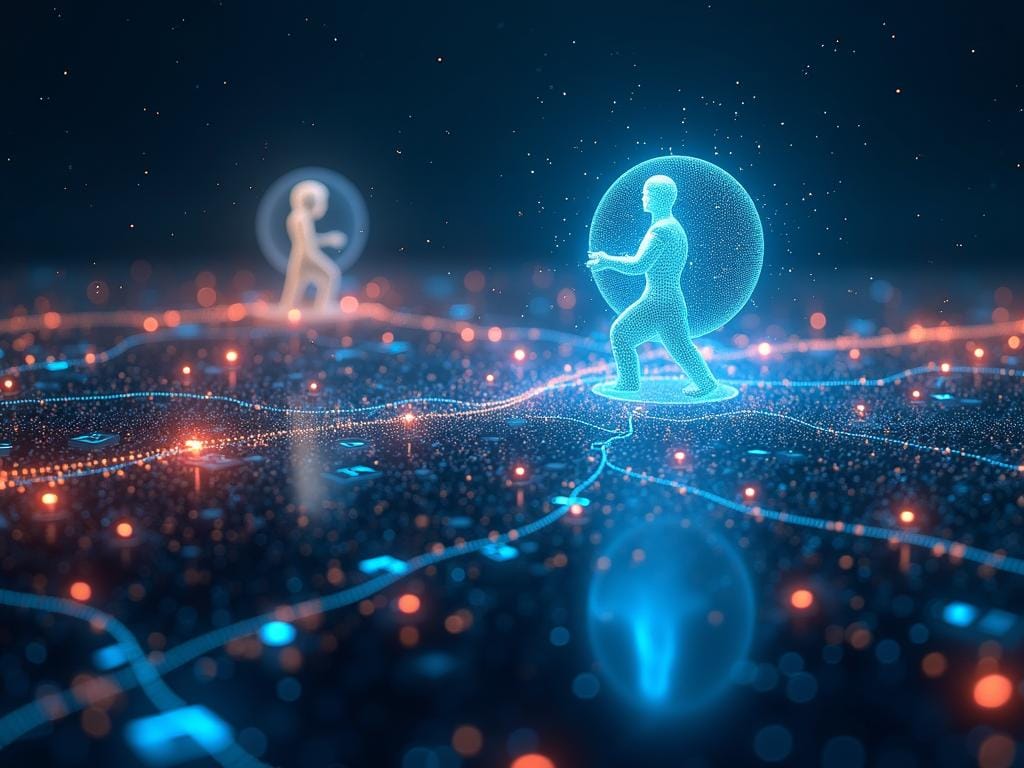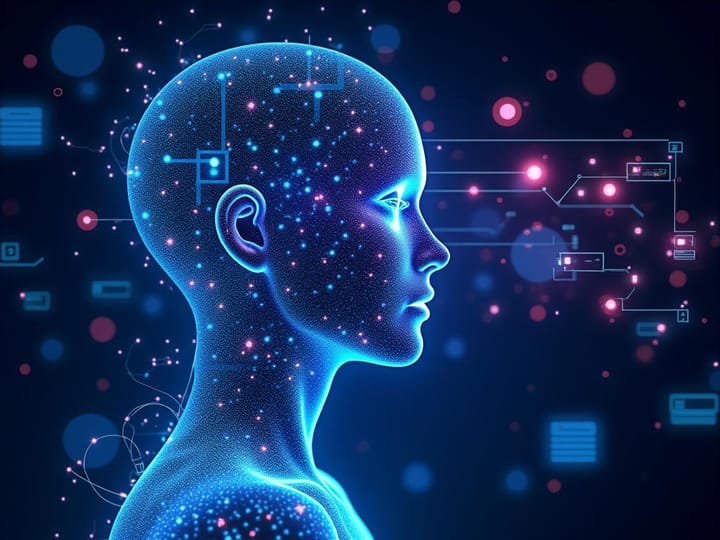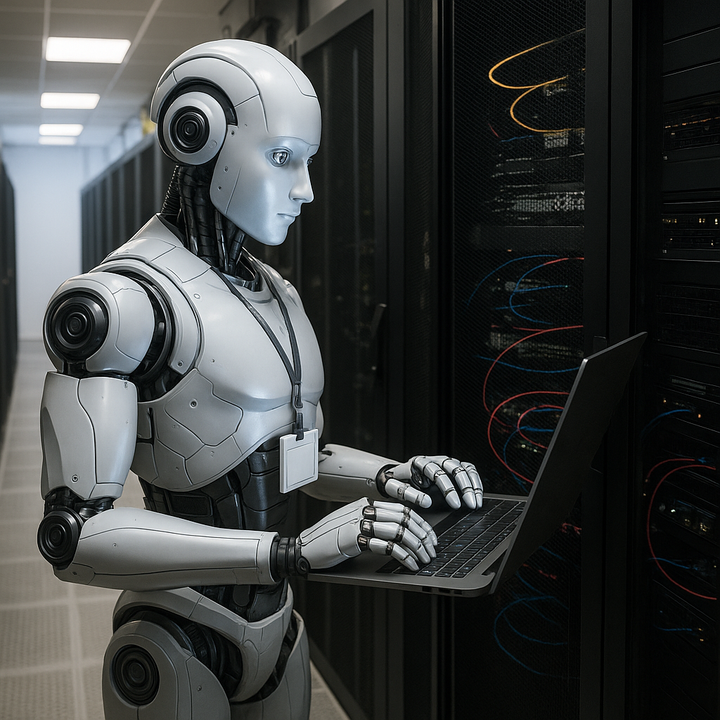The MCP Revolution: How the Model Context Protocol is Transforming AI in 2025
The 2025 standout innovation in AI is the Model Context Protocol (MCP), revolutionizing AI interactions by connecting models to external tools and data sources. This shift enables AI systems like Claude and ChatGPT to engage in real-time data retrieval and multi-platform tasks, enhancing producti...

In the rapidly evolving landscape of artificial intelligence, one innovation stands out in 2025 as perhaps the most transformative development since the advent of large language models themselves: the Model Context Protocol (MCP). This revolutionary framework is fundamentally changing how AI systems interact with the digital world, bringing unprecedented capabilities to tools like Claude, ChatGPT, and other leading AI assistants.
Meta-AI Moment: This article itself was generated using the very MCP technology it describes! More specifically, it was created with NLWeb, an implementation of the Model Context Protocol that enables AI to search, retrieve, and synthesize information from across the web in real-time. NLWeb allowed Claude to discover, analyze, and integrate insights from multiple blog posts on MCP applications, demonstrating the practical power of connected AI systems. You can learn more about how NLWeb works in my previous blog post, where I explore how this technology is revolutionizing content creation through dynamic, research-backed AI assistance.
What is MCP and Why Should You Care?
At its core, the Model Context Protocol serves as a standardized bridge between AI models and external tools, services, and data sources. Think of it as the nervous system connecting AI brains to digital limbs – enabling these systems to not just analyze information, but to actively engage with the world through APIs, databases, and web services.
The impact cannot be overstated: AI assistants are no longer confined to their pre-trained knowledge cutoffs. With MCP, they can retrieve real-time information, interact with your digital tools, and perform complex actions across multiple platforms – all while maintaining security and user control.
The Growing Ecosystem of MCP Applications
The AI community has quickly embraced MCP, leading to an explosion of innovative applications. Here's what's happening at the cutting edge:
1. Secure Infrastructure Solutions
Security concerns have been at the forefront of MCP adoption. As highlighted in "Run Any MCP Servers Securely and Easily with Docker", organizations are now implementing containerized solutions to manage MCP servers. This approach addresses critical challenges in security, installation complexity, and performance optimization – making enterprise adoption much more viable.
Docker-based deployments are becoming the standard, providing isolation, consistent environments, and improved observability for MCP server management. For teams concerned about safely implementing MCP, these containerized approaches offer a compelling solution.
2. Web Integration at Massive Scale
Perhaps the most exciting development is the integration of thousands of pre-built web tools with AI assistants through MCP. As detailed in "Claude MCP + Apify: 5000+ Web Tools for Productivity", platforms like Apify are offering ready-made actors that can be seamlessly connected to Claude and other AI systems.
This means AI assistants can now:
- Search specialized databases
- Extract information from complex websites
- Interact with web services that don't have formal APIs
- Process and transform data from multiple sources
The implications for productivity are enormous – tasks that once required custom coding can now be handled through natural language requests to AI assistants.
3. Task-Aware AI: The Next Evolution
One of the most profound shifts enabled by MCP is the emergence of truly task-aware AI systems. As explored in "AI's New Superpower: Task Awareness (Powered by MCP)", MCP allows AI to break free from the limitations of fragmented digital ecosystems.
Rather than working with static, pre-defined information, AI assistants can now dynamically access live data across multiple systems. This creates a holistic understanding of tasks and contexts, enabling AI to:
- Connect information across different applications
- Understand relationships between various digital assets
- Maintain awareness of ongoing projects and priorities
- Adapt recommendations based on real-time changes
This represents a fundamental shift from reactive, request-based AI to proactive, context-aware assistance.
4. Zero-Code Integration with Everything
Perhaps most importantly for non-technical users, MCP is democratizing access to advanced AI capabilities. As shown in "Connect Claude to Gmail, YouTube, Notion and 100+ Data Sources with Zero Code", tools like Composio are making it possible for anyone to connect AI systems to their digital tools without programming knowledge.
This zero-code approach is bringing MCP's benefits to a much wider audience, allowing individuals and small teams to create sophisticated AI workflows without dedicated technical resources.
Real-World Applications Transforming Industries
The true test of any technology is its practical impact. MCP is already showing remarkable results across various domains:
Revolutionizing Job Hunting
As demonstrated in "Stop Scrolling Indeed: Let Claude AI Find Your Next Job", MCP enables AI assistants to transform the job search process. Rather than manually scrolling through endless listings, job seekers can now leverage AI systems that:
- Automatically search multiple job platforms
- Filter and summarize the most relevant opportunities
- Draft personalized cover letters based on job requirements and the candidate's profile
- Track application status across multiple companies
This shifts the paradigm from passive browsing to active, AI-assisted career management.
Browser Automation and Control
MCP is also enabling direct browser control, as highlighted in "Claude Desktop Can Now Control your Browser". This capability allows AI assistants to:
- Fill out web forms automatically
- Extract data from websites with complex structures
- Navigate multi-step processes on behalf of users
- Perform repetitive web tasks at scale
For businesses, this means dramatic efficiency improvements for tasks like data collection, research, and routine web operations.
Community Building and Networking
Even social and community activities are being enhanced through MCP. "Find Your Tribe: How to Use AI (Claude), MCP, and Apify to Discover Meetups" demonstrates how AI can now help people connect with like-minded individuals by automating the discovery of relevant events and communities.
Avoiding the Pitfalls: MCP Best Practices
With great power comes great responsibility. As MCP adoption accelerates, understanding the potential risks becomes crucial. "Five MCP Mistakes You Don't Want in Production" offers essential guidance on avoiding common pitfalls, including:
- Security vulnerabilities from improper authentication
- Performance bottlenecks in high-volume scenarios
- Data privacy concerns with third-party services
- Reliability issues with dependent systems
Organizations implementing MCP-based solutions must approach these challenges thoughtfully to realize the full benefits while minimizing risks.
The Future: MCP is "Eating the World"
As "Claude Integration and MCP Are Eating the World" suggests, we're witnessing a fundamental shift in how AI interacts with existing software ecosystems. The ability to seamlessly connect to various applications is transforming user experiences and creating entirely new workflows.
This trend is likely to accelerate as:
- More services expose MCP-compatible endpoints
- Standards emerge for secure, efficient MCP communication
- Development tools simplify the creation of MCP connectors
- Organizations recognize the competitive advantages of connected AI
Getting Started with MCP
For developers, data scientists, and curious technology enthusiasts, there's never been a better time to explore MCP. The resources highlighted above provide excellent starting points, whether you're interested in:
- Setting up secure MCP infrastructure
- Connecting existing AI models to external tools
- Creating custom MCP connectors for specific applications
- Exploring ready-made MCP solutions for common use cases
The MCP revolution is just beginning, and those who embrace it early will have a significant advantage in shaping the future of AI applications.
Conclusion: A New Era of Connected Intelligence
The Model Context Protocol represents more than just a technical innovation – it's a paradigm shift in how we think about artificial intelligence. By breaking down the barriers between AI models and the digital world, MCP is enabling a new generation of connected, context-aware systems that can truly act as intelligent assistants rather than mere information processors.




Comments ()